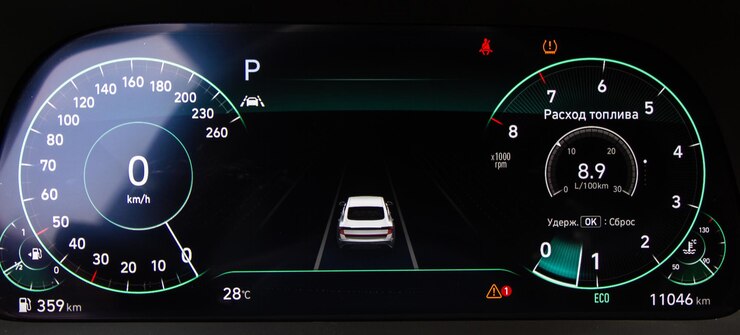Lane Departure Warning (LDW) systems are designed to enhance driver safety by alerting them when their vehicle drifts out of its designated lane. These systems utilize a combination of cameras and sensors to detect lane markings and provide visual and audible warnings to the driver. However, like any electronic system, LDW lights can occasionally illuminate, indicating an issue that requires attention. In this article, we will explore the common causes behind lane departure warning lights and potential fixes.
Causes of Lane Departure Warning Lights:
- Sensor Malfunction: Lane departure warning systems rely on sensors to detect lane markings and monitor the vehicle’s position on the road. If one or more of these sensors fail or malfunction, it can trigger the warning light. The sensors may become dirty, damaged, or misaligned, affecting their accuracy and performance.
- Electrical Issues: Faulty wiring, loose connections, or electrical problems within the LDW system can cause the warning light to illuminate. These issues can disrupt the communication between the sensors, control module, and dashboard, leading to false warnings or a complete system failure.
- Software Glitches: The LDW system’s software plays a crucial role in interpreting sensor data and issuing warnings. Occasionally, software glitches or bugs can occur, causing the warning light to activate even when no lane departure is detected. This can happen due to outdated software, compatibility issues, or errors in the programming.
- Physical Damage: The physical components of the LDW system, such as the cameras, sensors, or control module, can sustain damage from accidents, road debris, or environmental factors. Physical damage can impair the functionality of the system and result in the warning light turning on.
Fixes for Lane Departure Warning Lights:
- Sensor Calibration: In some cases, the sensors may require recalibration to restore proper functionality. This process involves realigning the sensors and ensuring they are accurately detecting lane markings. Calibration should be performed by a qualified technician using specialized equipment.
- Cleaning or Replacing Sensors: If the warning light is triggered due to dirty or damaged sensors, cleaning them with a non-abrasive solution or replacing them may be necessary. It is essential to follow the manufacturer’s recommendations and consult a professional for sensor maintenance or replacement.
- Electrical System Inspection: A thorough inspection of the vehicle’s electrical system can help identify and resolve any wiring or connection issues. Technicians will check for loose or corroded connections, damaged wiring, or faulty control modules. Repairing or replacing the affected components can often rectify the problem.
- Software Updates: Updating the LDW system’s software can address software glitches or bugs that may cause false warnings. Manufacturers periodically release software updates to improve system performance and address known issues. These updates can be performed by authorized service centers or dealerships.
- Repairing Physical Damage: If the warning light is a result of physical damage, it is crucial to have the damaged components repaired or replaced. This may involve repairing or replacing cameras, sensors, or control modules. Certified technicians should handle the repair process to ensure proper installation and calibration.
Lane Departure Warning systems provide an added layer of safety by alerting drivers when they unintentionally drift out of their lane. However, the warning light may illuminate due to various causes, such as sensor malfunction, electrical issues, software glitches, or physical damage. It is important to address the underlying cause promptly to ensure the LDW system operates effectively. Consulting with a qualified technician or authorized service center is advisable to diagnose and fix the issue accurately. Remember, maintaining the functionality of your LDW system is vital for promoting safer driving and reducing the risk of accidents on the road.











